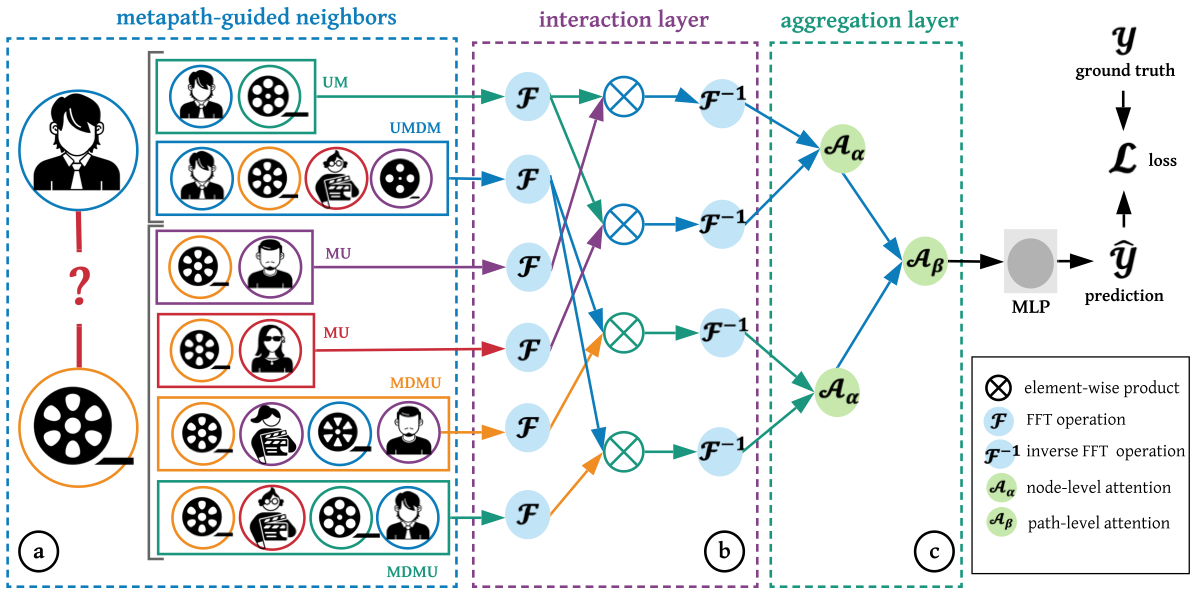GraphHINGE: Learning Interaction Models of Structured Neighborhood on Heterogeneous Information Network
Heterogeneous information network (HIN) has been widely used to characterize entities of various types and their complex relations. Recent attempts either rely on explicit path reachability to leverage path-based semantic relatedness or graph neighborhood to learn heterogeneous network representations before predictions. These weakly coupled manners overlook the rich interactions among neighbor nodes, which introduces an early summarization issue. In this paper, we propose GraphHINGE (Heterogeneous INteract and aggreGatE), which captures and aggregates the interactive patterns between each pair of nodes through their structured neighborhoods. Specifically, we first introduce Neighborhood-based Interaction (NI) module to model the interactive patterns under the same metapaths, and then extend it to Cross Neighborhood-based Interaction (CNI) module to deal with different metapaths. Next, in order to address the complexity issue on large-scale networks, we formulate the interaction modules via a convolutional framework and learn the parameters efficiently with fast Fourier transform. Furthermore, we design a novel neighborhood-based selection (NS) mechanism, a sampling strategy, to filter high-order neighborhood information based on their low-order performance. The extensive experiments on six different types of heterogeneous graphs demonstrate the performance gains by comparing with state-of-the-arts in both click-through rate prediction and top-N recommendation tasks.
PDF Abstract

